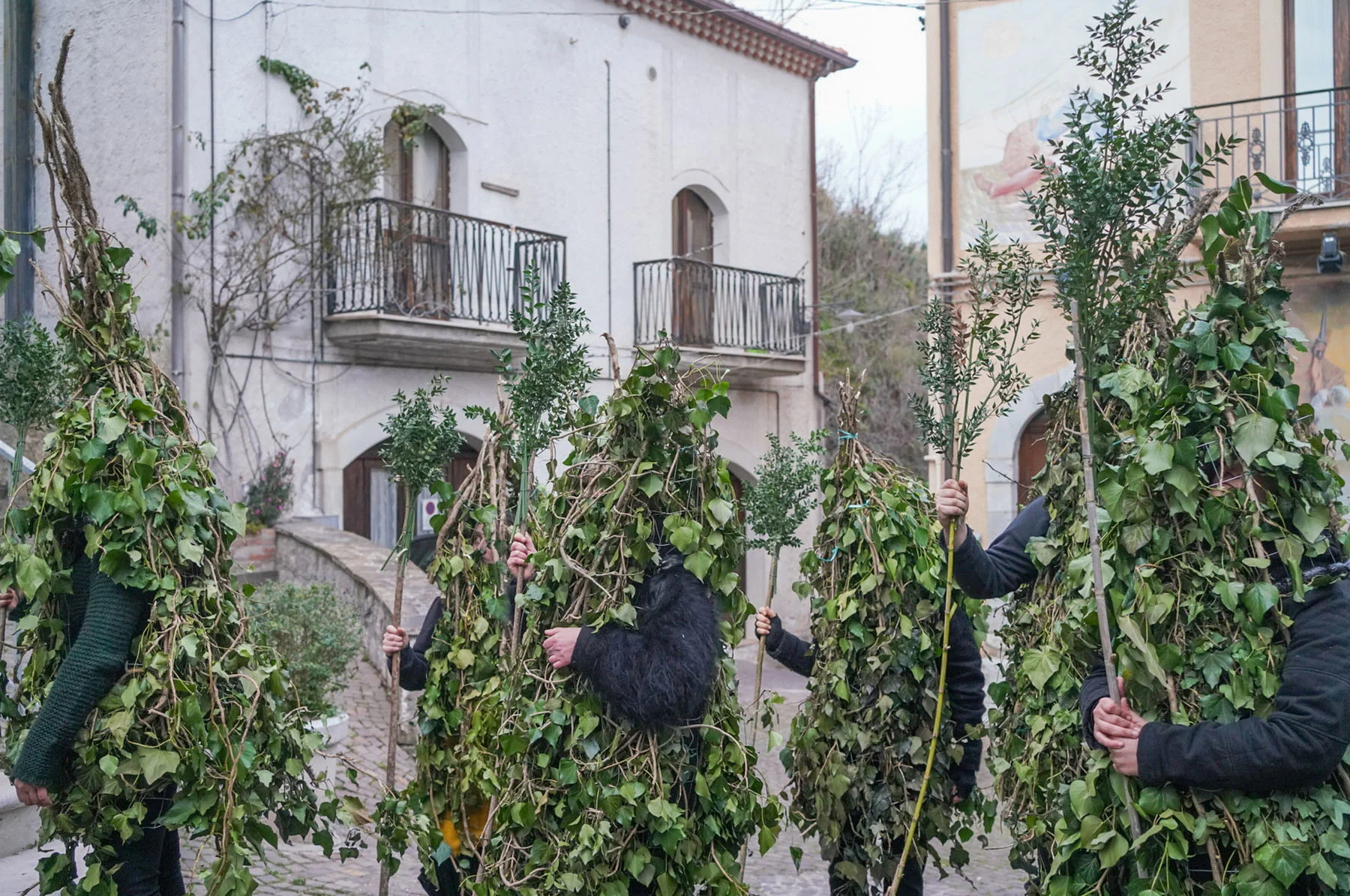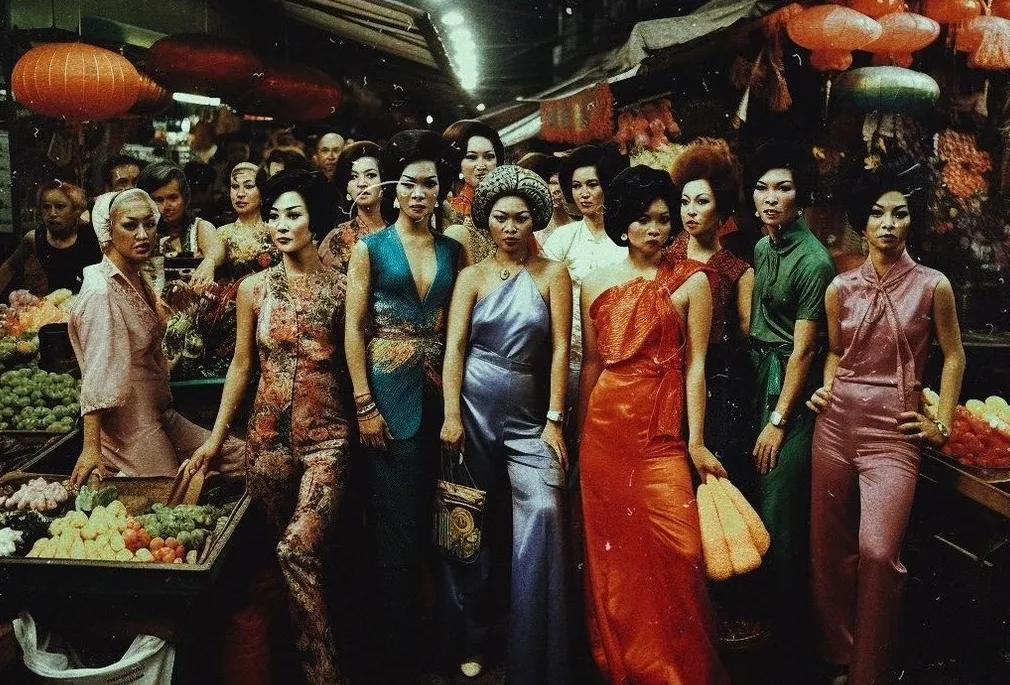
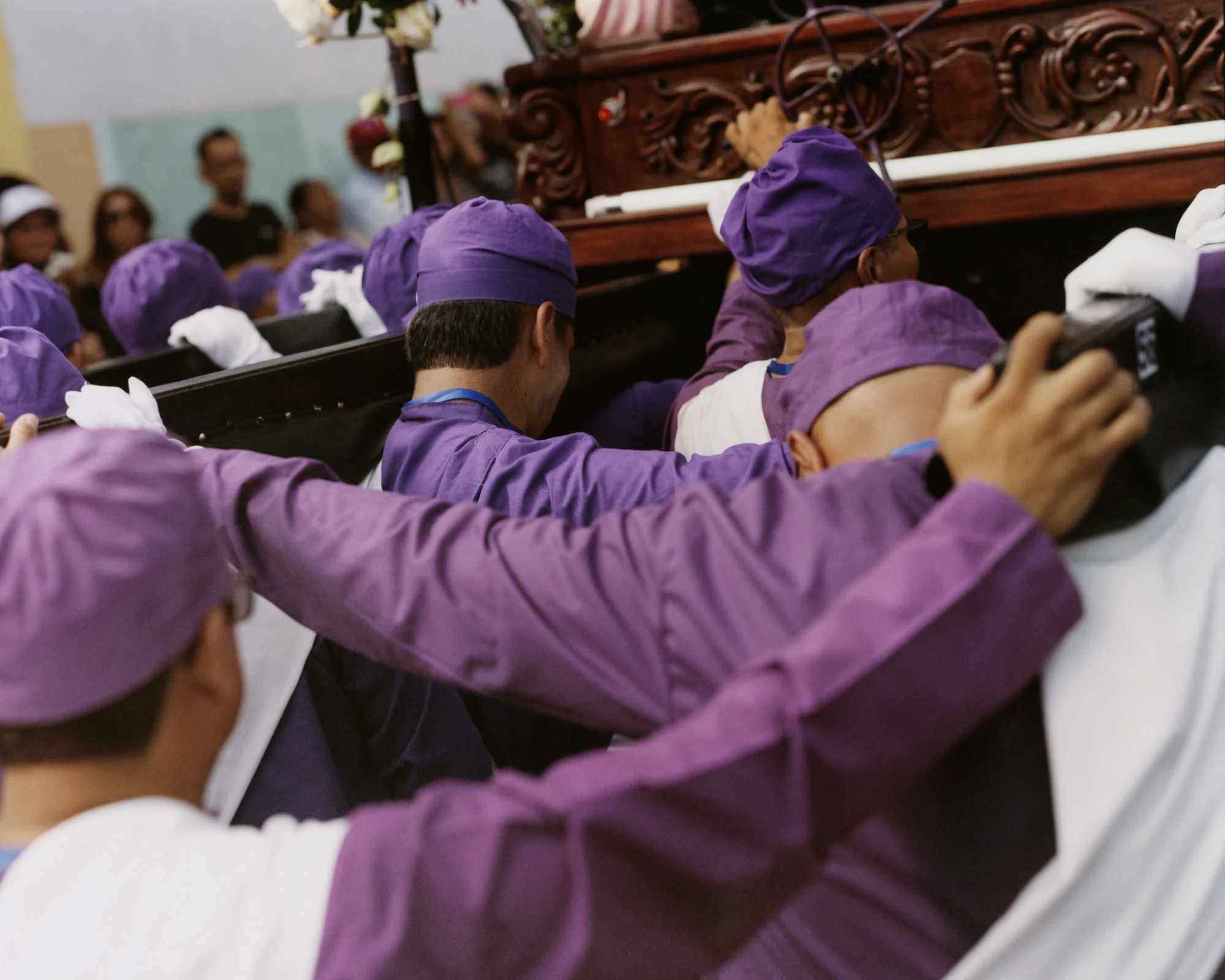
For the last decade, documentary photographer Benjamin Eagle has journeyed around the globe capturing expressions of faith and traversing the worlds of folklore, religion and cultural traditions. In his latest project “Procession of El Santo Entierro,” he immersed himself in one of El Salvador’s most powerful religious traditions. The sound of prayers and hymns fills the air as an elaborate procession takes to the streets to honor the suffering and sacrifice of Jesus Christ. He tells Gem Fletcher how his interest in belief began, and what he has discovered in witnessing the power of devotion.
Nestled between two volcanos and lush forests, 70 kilometers west of El Salvador’s capital, San Salvador, lies the small town of Izalco. Every year, during Semana Santa [known as holy week], which marks the end of Lent and the start of Easter, Izalco becomes the stage for one of the country’s most solemn and powerful religious traditions—the Procession of El Santo Entierro. In a Christian faith and remembrance ritual, the local community come together in procession to honor the suffering and sacrifice of Jesus Christ. The sound of prayers and hymns fills the air as the procession moves slowly through the streets, transforming the town into a living expression of faith, memory and collective identity.
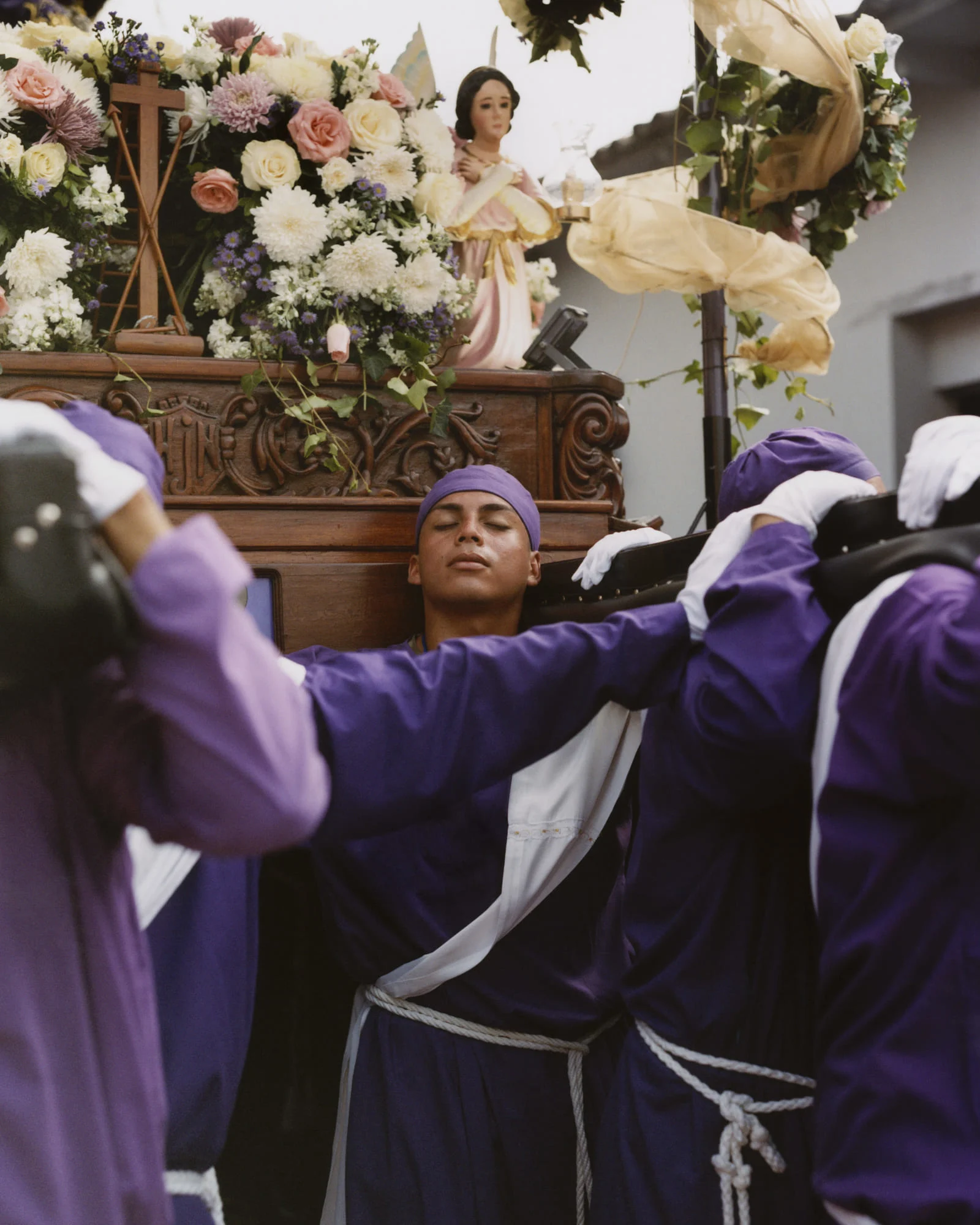
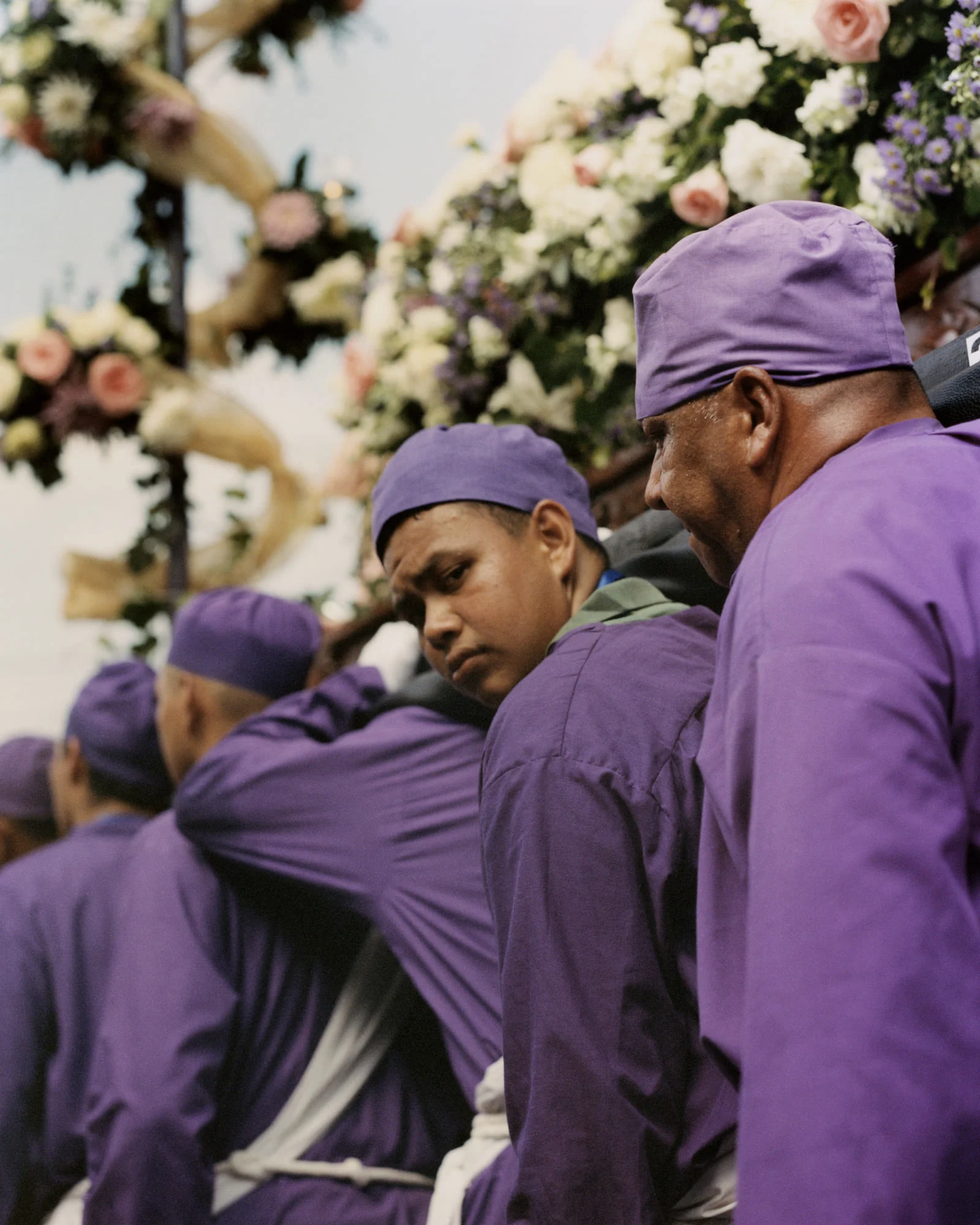
I remember a sense of quiet preparation… and then slowly, the streets transformed.
In 2024, London-based documentary photographer Benjamin Eagle journeyed to Izalco to capture the poise and majesty of the Procession of El Santo Entierro. His photographs consist of serene formal portraits illustrating quiet, reflective moments of independent contemplation and bold and active moments of participation that distill the communal aspect of the procession. This sharp contrast tries to animate the interconnected relationship between mythical sites and those visiting them.
Eagle is quick to point out that his work would be impossible without the help of local fixers, the unsung heroes of documentary photography. Fixers help facilitate a project through research, production and having a deep understanding of the local customs and context, offering photographers a portal into a world they would otherwise struggle to access.
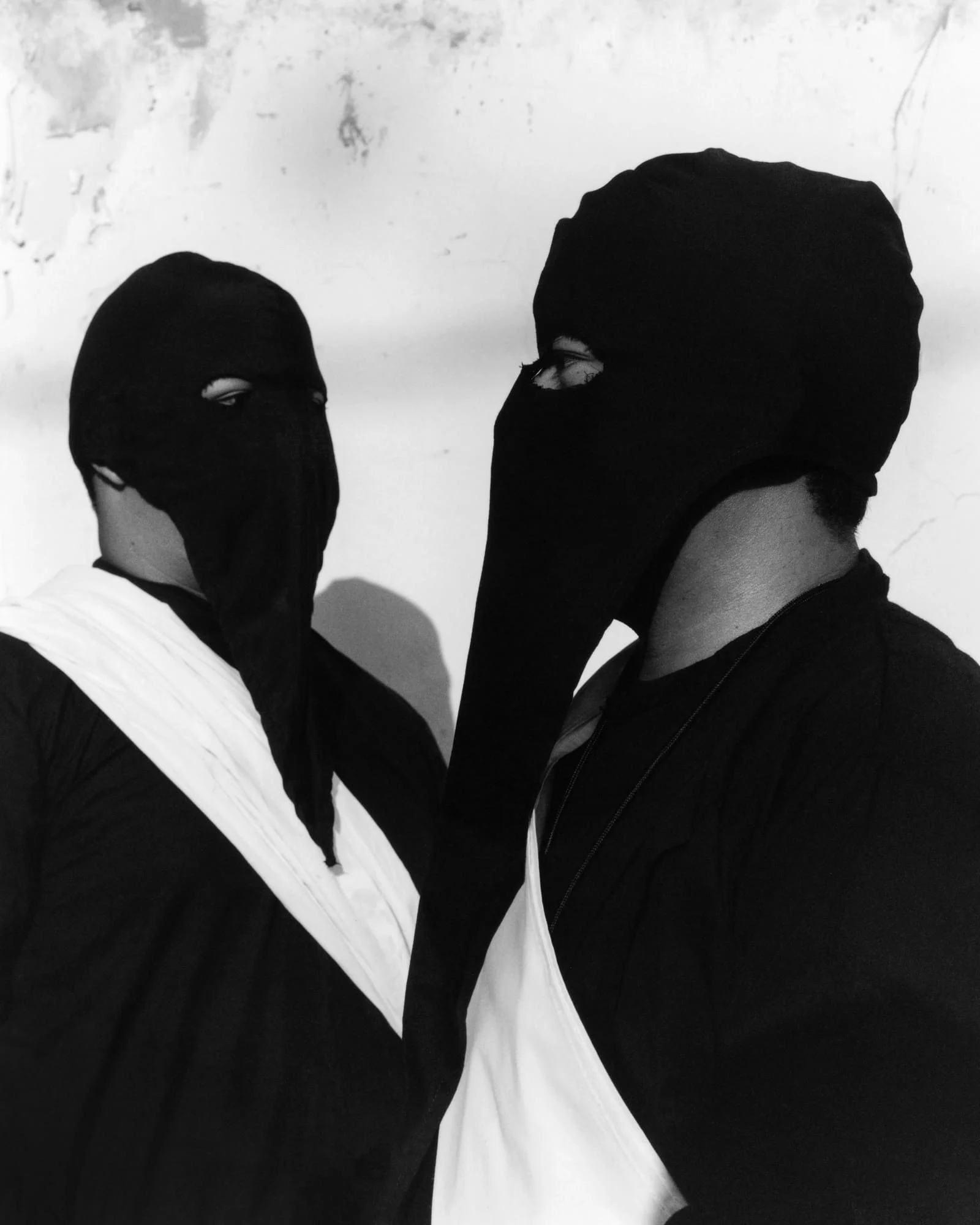
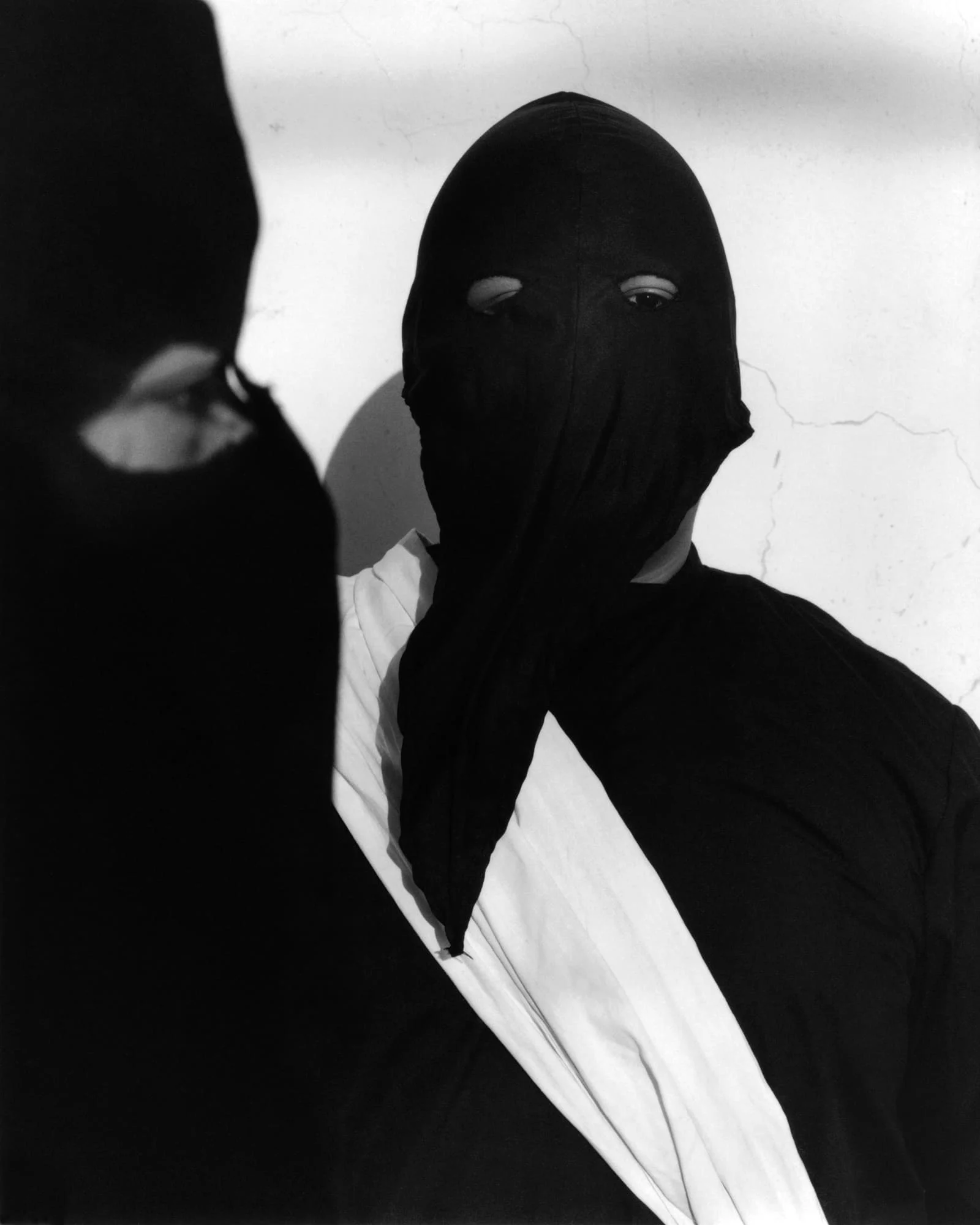
Everyone carries their role with dignity, which I tried to hold onto in the portraits.
Eagle and his local fixer Paula Rivera, who he’s worked with in El Salvador for the last three years, engaged in a long research period before arriving at the Procession of El Santo Entierro, which began in the afternoon and ran through the night into the early hours of the following morning. “There’s only so much you can anticipate,” shares Eagle about his memories of the shoot day. “I remember a sense of quiet preparation. People began to gather, slipping into robes, adjusting masks and helping each other get ready. In the distance, you could hear the sound of drums and brass bands, and then slowly, the streets transformed.” The procession’s route through the town is guided by elaborate ground carpets made of colored sawdust and flowers; the pace is slow as the stamina required to carry the heavy sculptural floats in the blistering heat is sometimes excruciating. The steady pace was helpful to Eagle, giving him ample space and time to connect with people and immerse himself in the day’s energy.
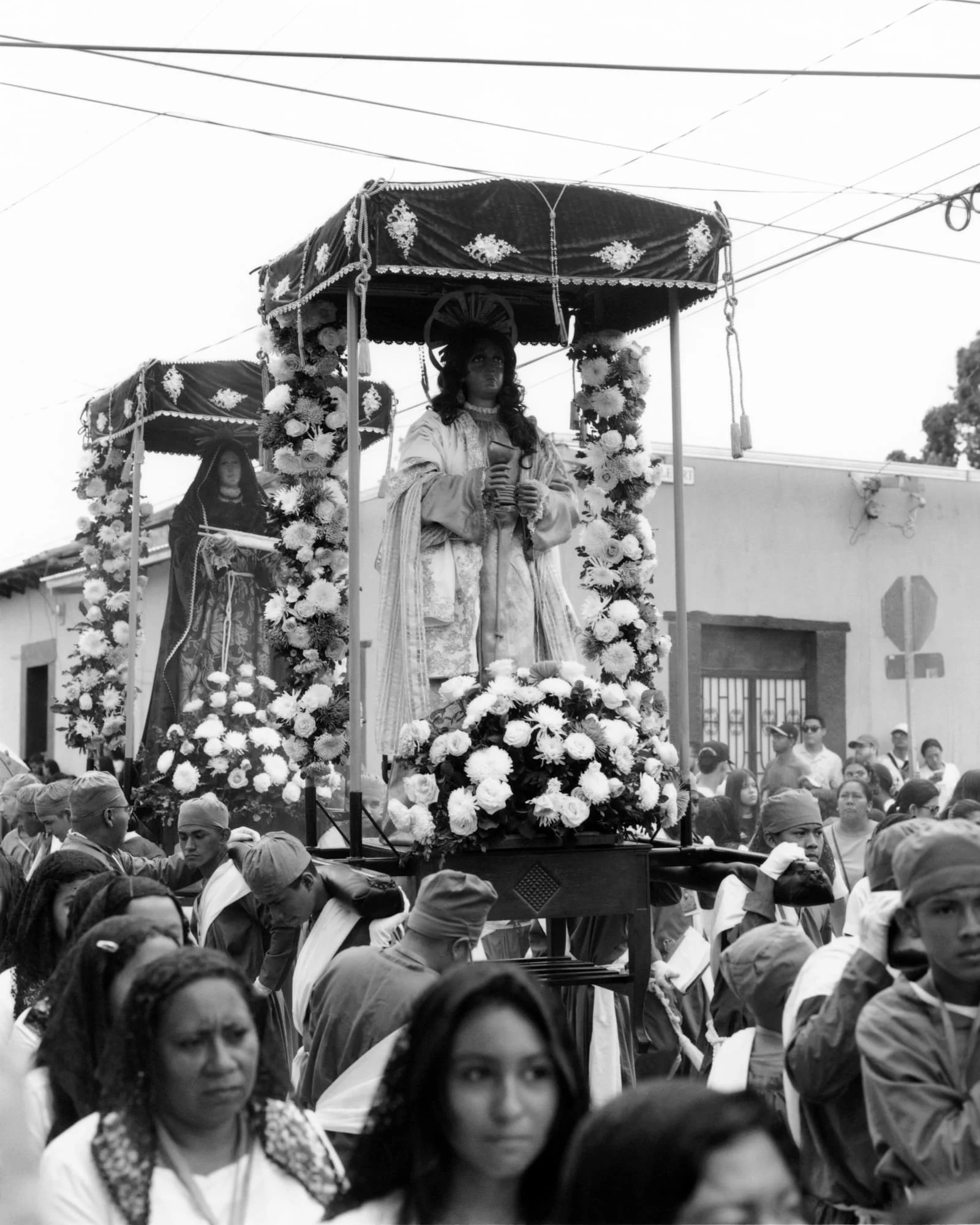
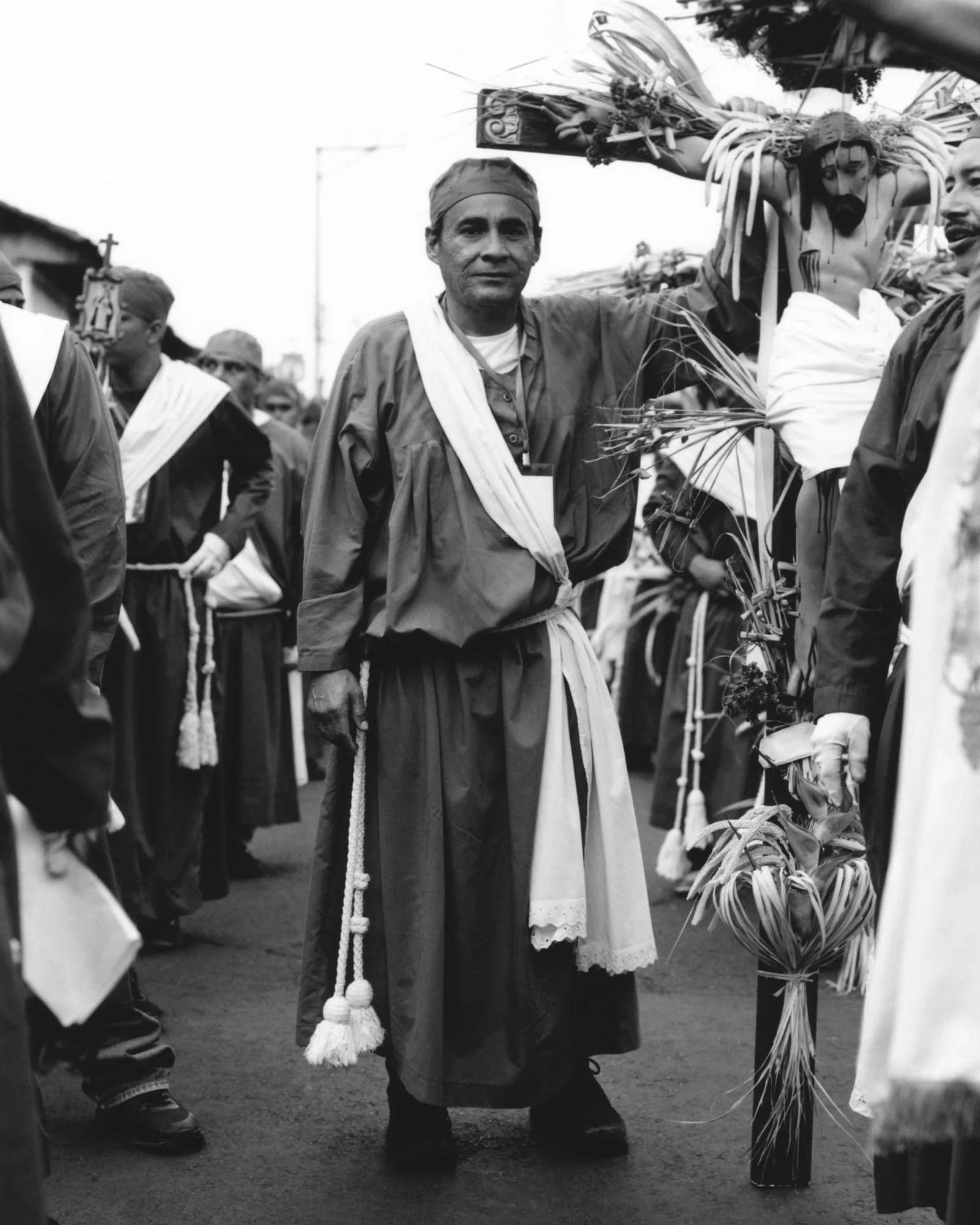
Eagle’s portraits get straight to the heart of the community. He lenses both the cucuruchos, men adorned in black robes and hoods who carry the heavy floats depicting scenes from the passion, as well as the verónicas, who wear long white dresses and hold images of the Virgin, shedding light on the long-upheld communal traditions of the procession. “The cucuruchos carried a certain discipline and intensity to their role,” explains Eagle. “The verónicas brought a different energy, which felt serene, devotional and full of presence. The contrast between the two groups created this visual rhythm throughout the procession and formed the emotional backbone of the day, embodying grief, reverence, and pride. Everyone carries their role with dignity, which I tried to hold onto in the portraits.”

I’ve always experienced a sense of openness and generosity in these communities.
Over the last decade, Eagle has documented expressions of faith, which have become a throughline in his practice. From the vibrant Jacmel Carnival in Haiti, to the elaborate processions of St Joseph Day in El Salvador, to Spain’s Virgen Del Rocío, in which over a million devotees from across Andalusia converge on the tiny town of El Rocío to pay homage to the Virgin Mary, he traverses the worlds of folklore, religion and cultural traditions across the globe. While a fascination with devotion might be the initial draw for Eagle, it’s the community and intergenerational relationships surrounding these events that motivate him to document these stories. “There seems to be a collective sense of pride at these events,” he says. “People are eager to share and celebrate their history and traditions. I’ve always experienced a sense of openness and generosity in these communities, which is why I think I’m so drawn to them.”
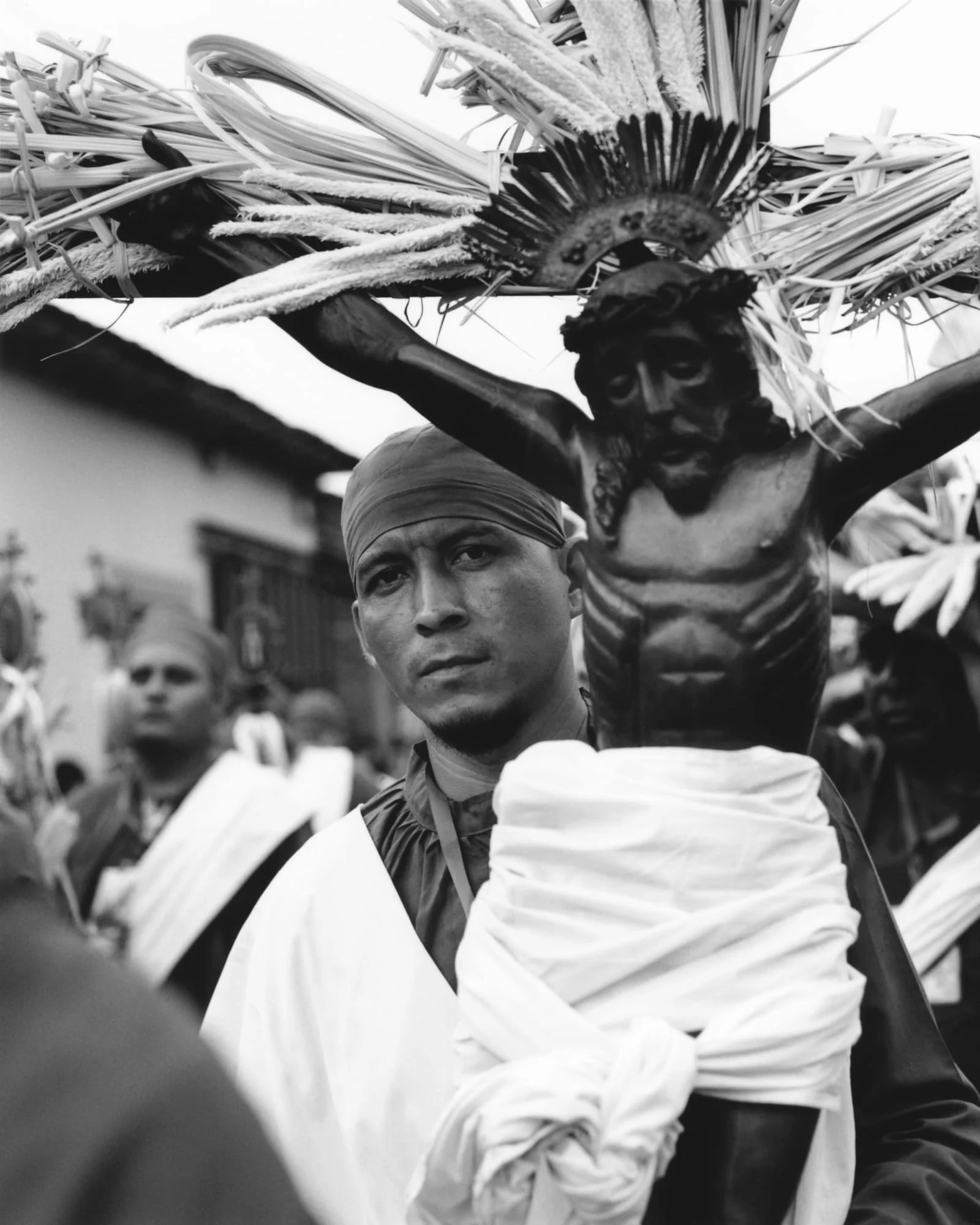
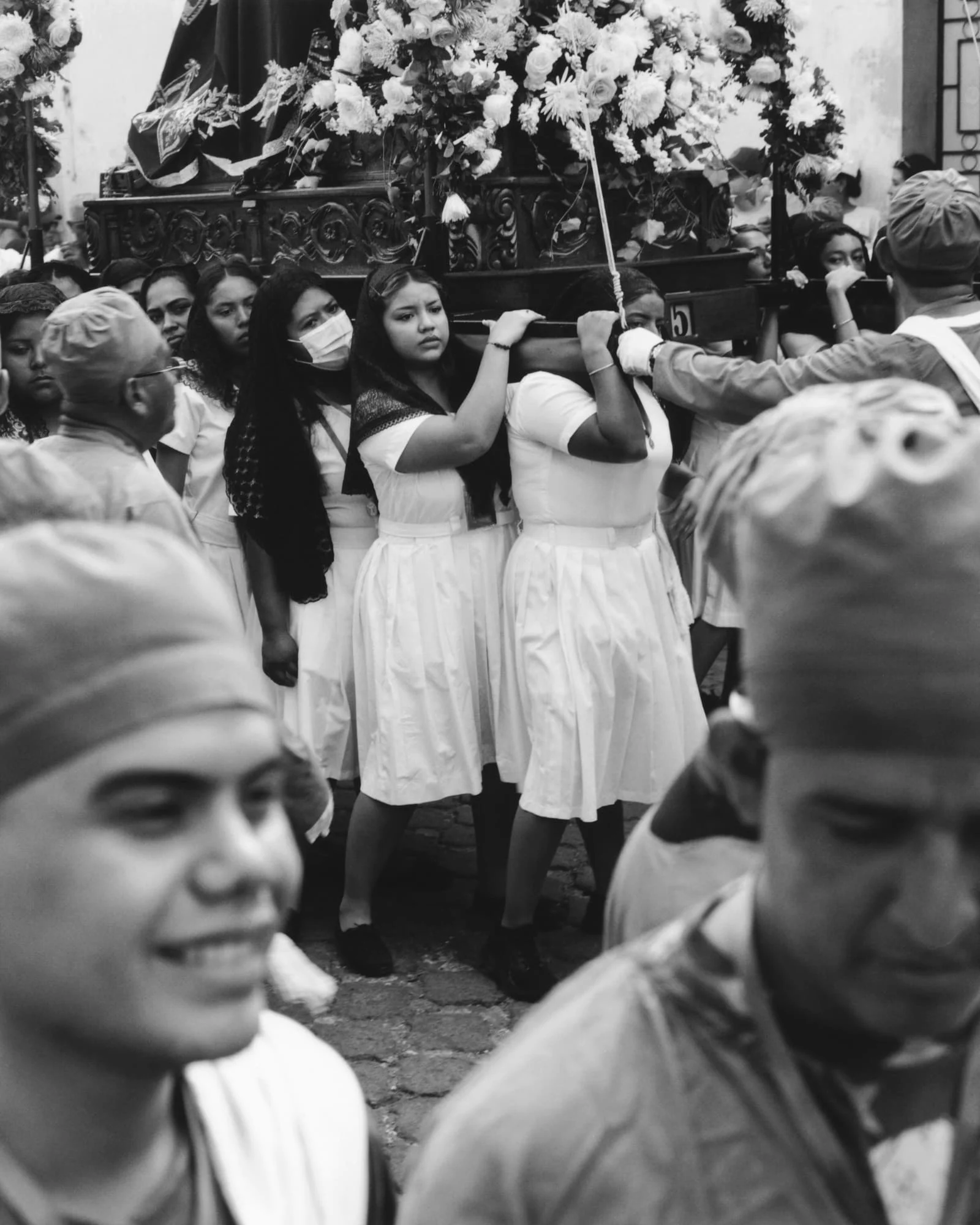
Eagle’s fascination with faith and folklore is rooted in an existential place. He didn’t grow up in a religious household and never had a spiritual practice, but instead, from a young age, had a real fear and preoccupation with death and affinity. “I remember having panic attacks in the back of my Dad’s car,” explains Eagle. “I had periods of hyperventilating where my brain would become stuck in a cycle of worrying about the inevitability of death and what happens when I’m gone.” From then on, despite not intending to join or practice a particular faith, Eagle began to find comfort in researching the gamut of religion and spirituality, in the assurance of the power of belief and notions of the afterlife.
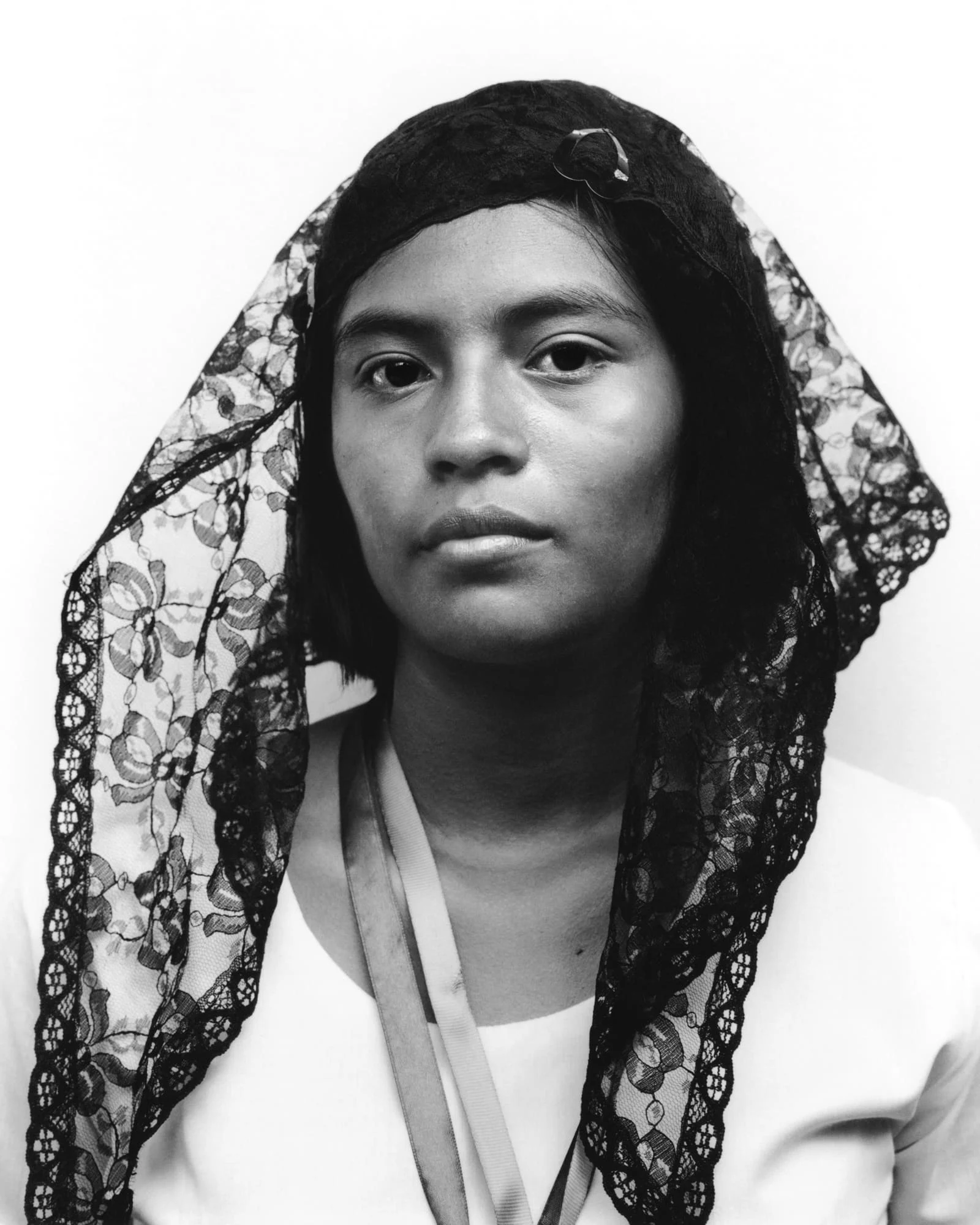
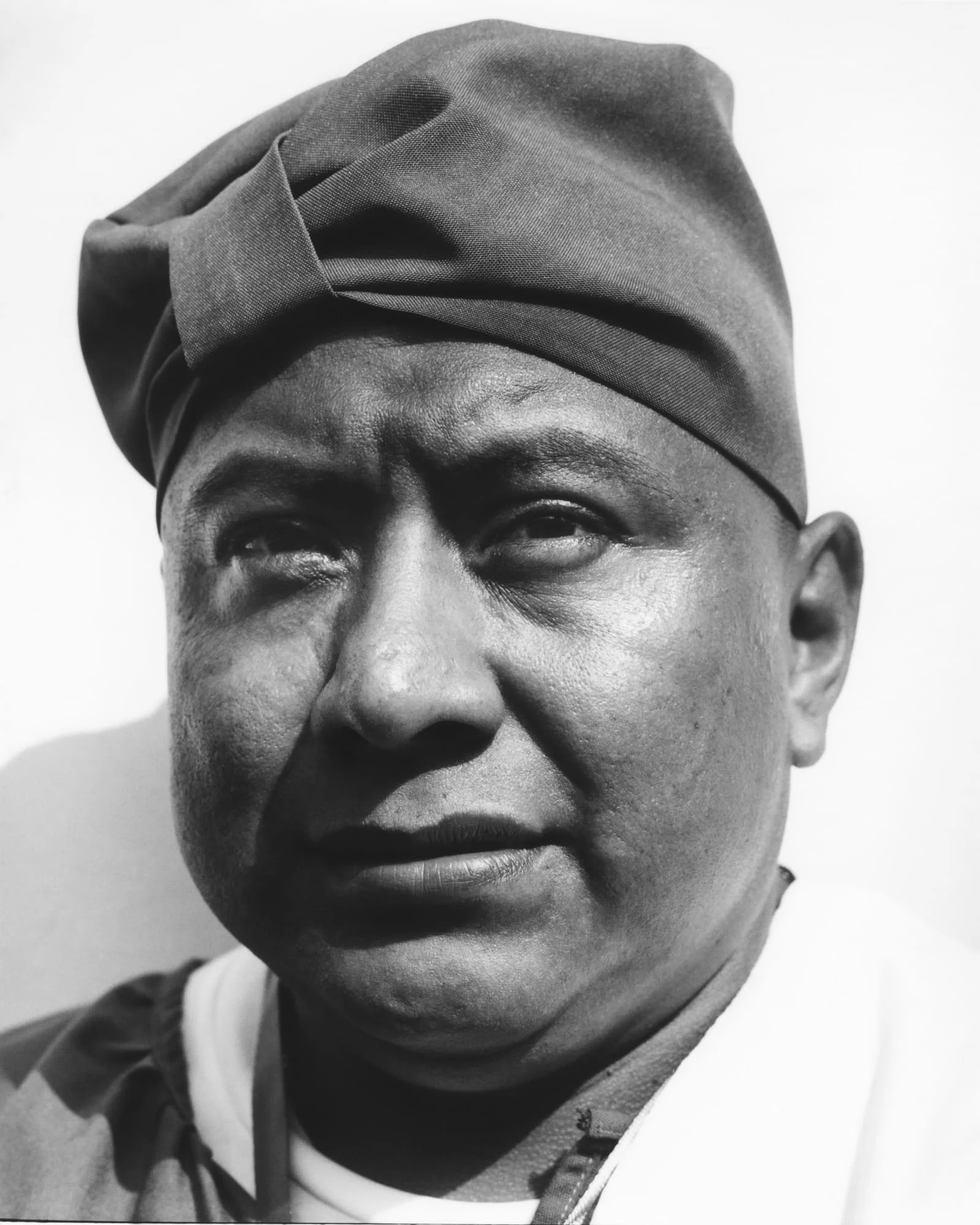
In April, Eagle traveled to the Vatican City in Rome to document world leaders, dignitaries, religious figures and a devolutional public paying their respects to the late Pope Francis. Unlike many of his other projects, Eagle’s images of the beloved Pope’s funeral were less about elaborate rituals and dramatic processions and instead focused on quiet, reflective moments told through arresting monochromatic portraits.
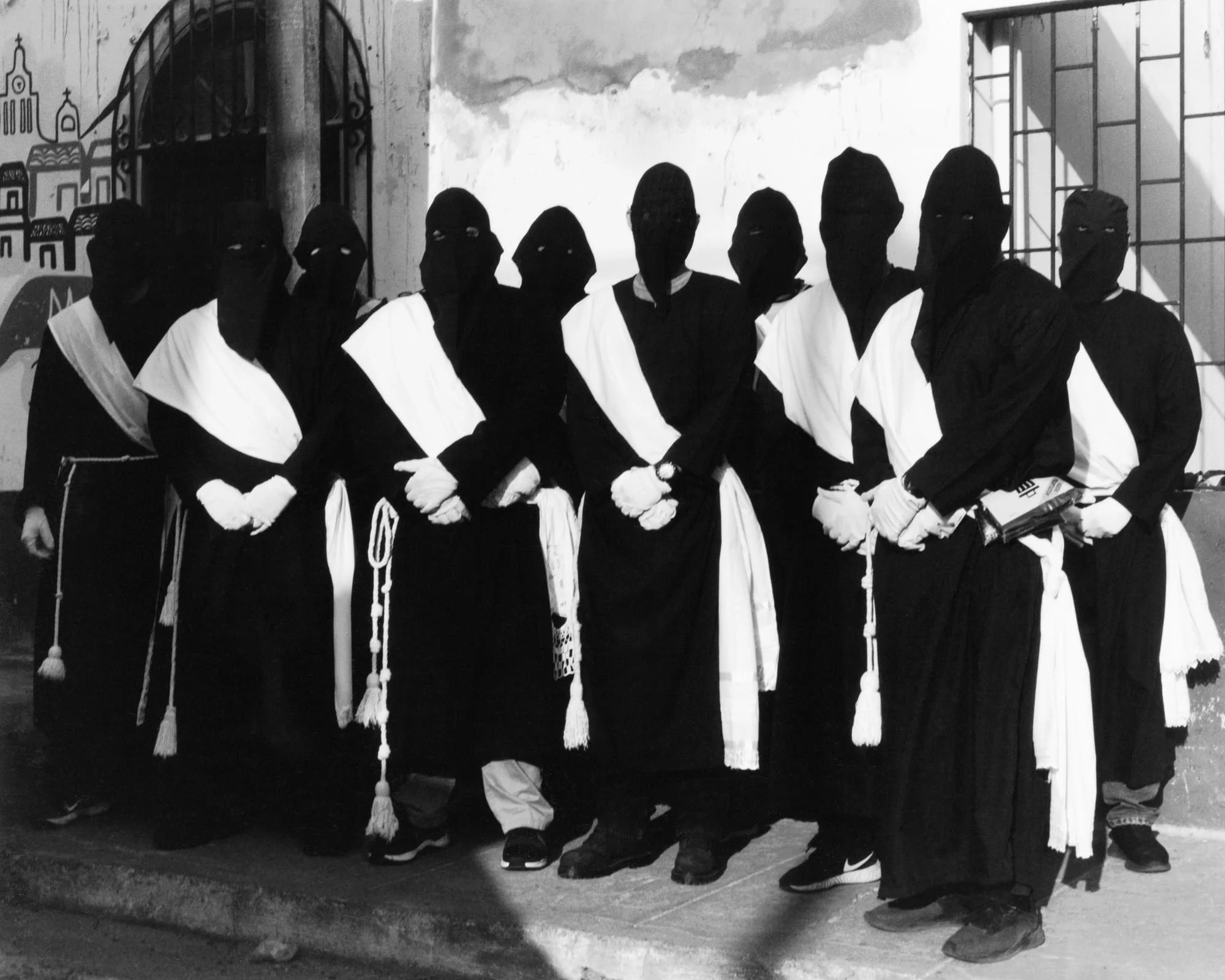
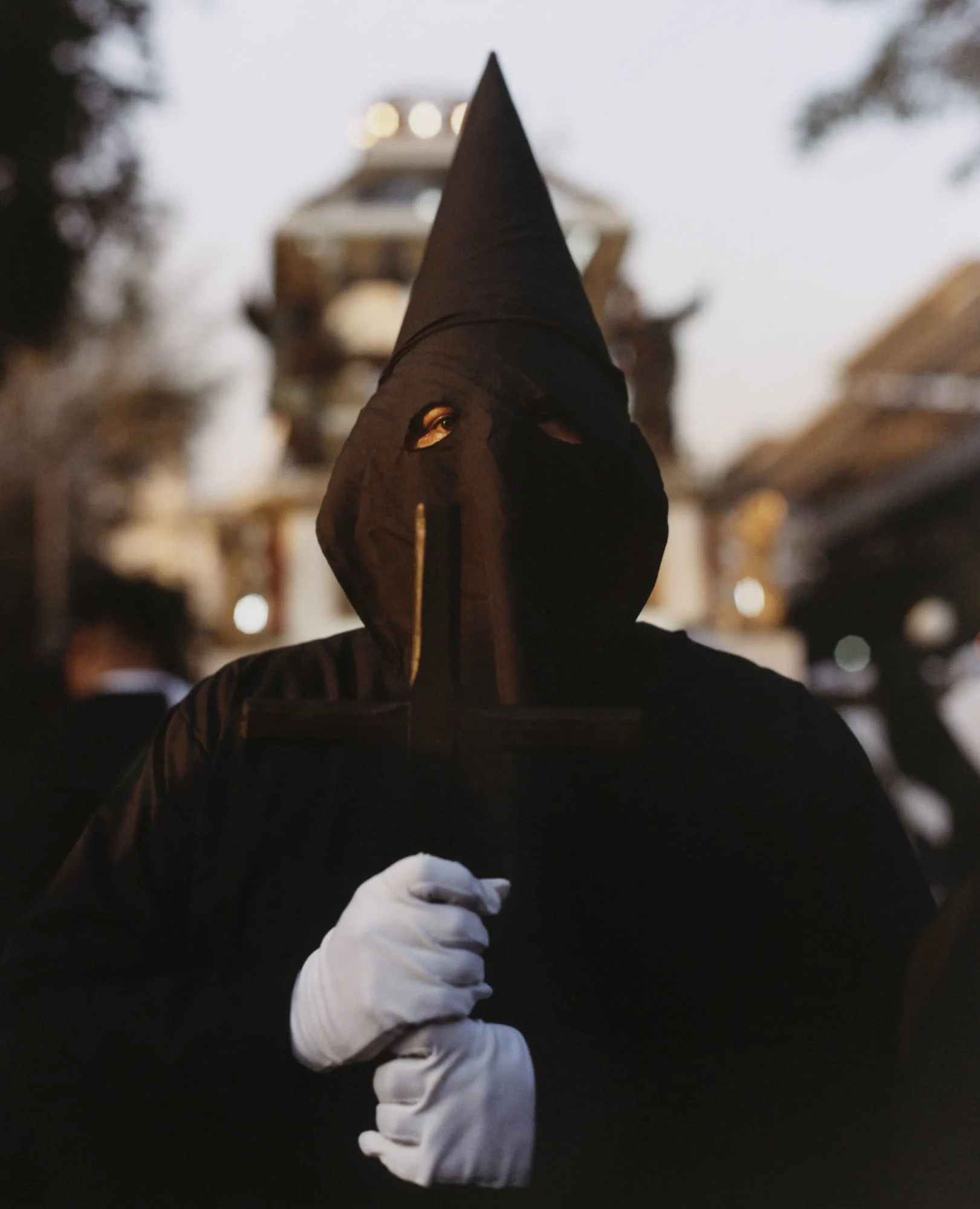
“It was the sheer scale and global significance of the event that drew me to the Vatican,” explains Eagle. At a time when there’s so much instability and division globally, it felt like a powerful reminder of the importance of humanity coming together, in this instance, to celebrate the life of such a liberal and outward-looking leader. It wasn’t just a religious moment—it was a rare instance where people from all over the world, from different cultures and backgrounds, came together under a shared sense of faith and collective mourning.”
